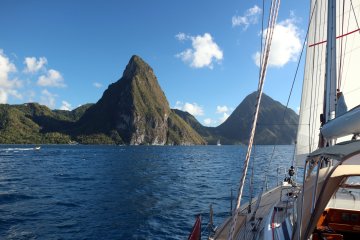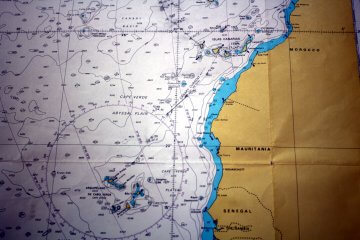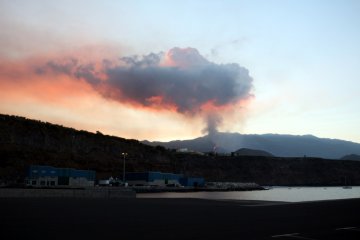A friend of ours had told us that it was possible to visit a “Lava Tube” called “Cueva de Las Palomas” or “tubo volcánico de Todoque” near Todoque, which was in turn not too far from the marina. I’m no volcanologist, but I really do like volcanoes and anything to do with them. This was a must!
We drove to the “museum” at the site of the lava tube, watched the requisite videos and then tried to book our tour. Unfortunately it seemed that this was only possible online, even though we were standing right in front of the usual cash desk – the Corona pandemic has changed so many things… The good news was that groups were limited to 6 people and as we were 4 already we would be getting an almost exclusive tour.
The museum is located right in the middle of the lava field that was the result of an eruption in 1949. If you like volcanoes and lava flows then just walking round the area near the museum will set your senses tingling. If you don’t [like volcanoes] then it’s just like a building site and you will be yawning already.
We arrived in the morning ready for our excursion into the depths. We were in fact a little too early, but the area is itself quite interesting.
What was not said, but could easily be deduced from the terrain, is that this is no place for flip-flops or beach sandles. Stout training shoes or good walking shoes/boots are best and long trousers and perhaps a long sleeved shirt. The air inside the tube/cave can be cool and damp!
Other safety gear – helmet, lamp and a rather nifty hair-net are all provided ready sanitised as is a guide (the guide may or may not be sanitised too).
The whole thing was made a little eerie because we were also in the middle of a “calima” event with very fine sand from the Sahara suspended in the air. This gave the sky a strange yellow tinge. We had the same thing in March 2020 just before “Carnival”. (See this post for last time this happened)
The short walk along a raised walkway to the entrance of the lava tube was quite interesting. The walkway meandered through the lava field and we were able to see various channels and shapes created by the flowing lava. Our guide kept us well informed and explained how things were formed.
The guide led the way through the [locked] gate, which was re-locked after we entered for safety reasons. (the guide explained that further into the lave tube there was an emergency exit). At this point we had to don our helmets and lights; at first this seemed unnecessary as the tube was so high! Soon it did became clear why this was necessary.
What was impressive was the sheer size of the entrance to the lava tube. The guide explained that the cave was caused by a gigantic gas bubble bursting open the still forming tube. This gave the pit like quality and created the colossal cavern.
Further down the tube had very smooth walls and it was interesting to see the “flow” marks left by the molten lava. It was explained that the tube is formed by the lava on top cooling and forming a hard crust whilst the lava below melts the underlying rock and carves itself a channel. This process continues until the lava flow stops or some other obstruction is met. Because of this effect there were other smaller tubes leading in and out of the main one, most of which were unpassable.
Proceeding down the tube it became more apparent why we needed hard helmets. The roof gradually became lower and lower until we were forced to stoop. It also sported many “drips” of solidified lava which would have been quite painful.
Interestingly there were roots coming through from the plants above and there were even a few lizards down there. It feels as though you’re a long way down, but in fact the tube is only a few metres below the surface.
After 20 minutes or so we reached the limit of the tube. It was possible to continue further, but it would be a real hands and knees scramble over very sharp rocks and stones. You could see the light at the end of the proverbial tunnel though. The guide explained that the tube carried on for some distance but it was mostly inaccessible as it had been filled in when the road was built.
All in all a very impressive and interesting tour. Worth doing to find out a little bit more about the history of the island and it’s volcanoes.



